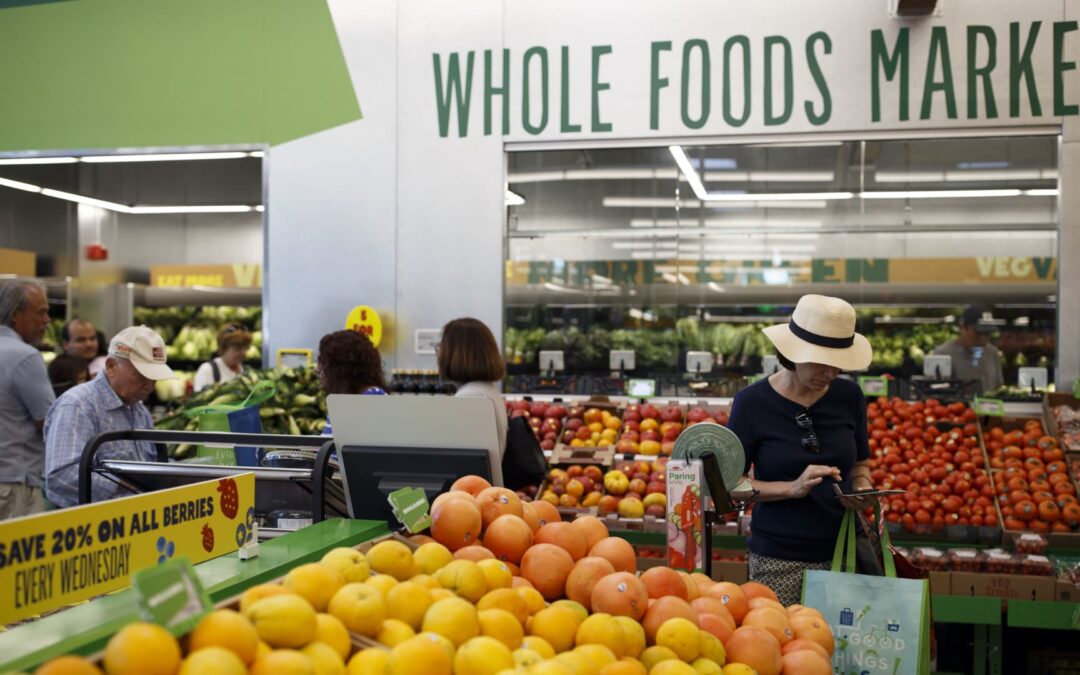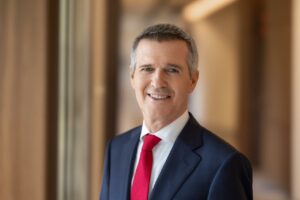Customers shop for produce at a Whole Foods Market 365 location in Santa Monica, California.
Patrick T. Fallon | Bloomberg | Getty Images
As Amazon looks to add more automation into its supermarkets, the retailing giant is partnering with a Khosla-backed startup that just came out of stealth last year, CNBC has learned.
Last week, Amazon announced it’s piloting a new concept at one of its Whole Foods locations in a Philadelphia suburb, where a micro-fulfillment center will be bolted onto the store and allow shoppers to purchase staples not typically stocked by the organic grocer.
The facility relies on warehouse automation technology from Fulfil, a San Francisco-based startup that develops robotic systems for grocers and other retailers, according to a person familiar with the matter and other corroborating information. The person asked not to be named because the plan is confidential.
At a recent press event held near an Amazon warehouse in Nashville, Anand Varadarajan, who leads the product and technology teams for Amazon’s worldwide grocery business, showed a video demonstrating the use of Fulfil’s technology. In the video, robots can be seen pulling trays of soy sauce, canned pineapple and coffee pods from shelves, then handing them off to other robots equipped with grocery bags.
The video makes no mention of Fulfil’s technology, but the system appears identical to the contents of a demo video on Fulfil’s website.
Amazon declined to comment on whether it’s using Fulfil’s technology. The company said it invests in a variety of technologies and robotics, including those developed in-house and from third-party partners, to improve its operations networks. Fulfil CEO Mir Aamir declined to comment.
The Information reported earlier on Amazon testing Fulfil’s technology.
Fulfil emerged from stealth in February 2023, announcing at the tie time that it raised $60 million in a round led by Eclipse Ventures, with participation from Khosla Ventures and DCVC. Prior to working with Amazon, the company was testing its technology with California-based retailer Lucky, which is owned by regional grocer Save Mart, and is also an Amazon grocery delivery partner.
Recent job postings on Fulfil’s website indicate the company is hiring engineers and factory operators in Plymouth Meeting, Pennsylvania, the site of the Whole Foods store where Amazon is piloting its technology. Amazon expects the facility to be operational within the next year, Tony Hoggett, who leads Amazon’s worldwide grocery business, said in a blog post last week.
Fulfil’s technology will enable shoppers to purchase staples from brands that aren’t stocked at Whole Foods, which has long maintained a “No List” of hundreds of ingredients that are banned from all the food it sells. It’s meant that shoppers looking for items like Coca Cola and cereals from Kellogg’s can’t find them on shelves at Whole Foods, which Amazon acquired in 2017 for $13.7 billion.
The system being piloted in Plymouth Meeting will let shoppers order items from Amazon’s website and its online grocery service, Amazon Fresh, while browsing Whole Foods. They can pick up items purchased online in the store as they’re checking out.
A small automated warehouse would be bolted onto a Whole Foods store, where robots fetch and ferry items like socks, soda bottles or tennis rackets and place them into bags for pickup.
Hoggett wrote in the blog post that Amazon is looking to “eliminate those extra trips” shoppers take to other grocery stores. The average American shops at two different grocery stores per week, whether to maximize their cost savings, shop from a broader range of products, or take advantage of different promotions, according to an April study from market research firm Drive Research.
Sales growth in Amazon’s physical stores unit, which includes Whole Foods and Fresh, has been mired in the single digits for the past seven quarters.
WATCH: Remain bullish on Amazon








